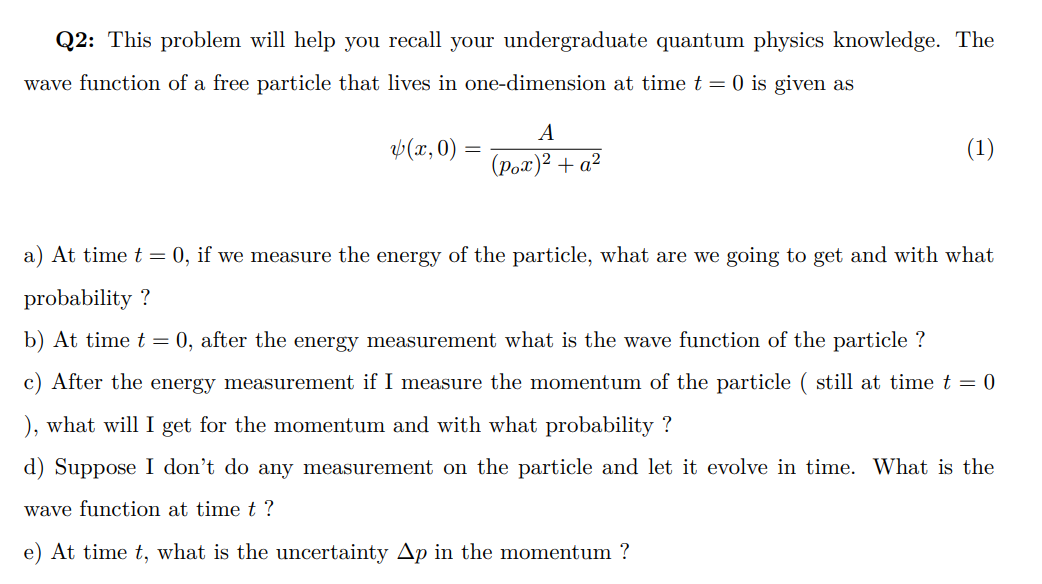Home /
Expert Answers /
Advanced Physics /
need-a-solution-by-tomorrow-please-write-the-solution-clearly-and-make-sure-it-is-eligible-q2-pa787
(Solved): Need a solution by tomorrow, please write the solution clearly and make sure it is eligible. Q2: ...
Need a solution by tomorrow, please write the solution clearly and make sure it is eligible.
Q2: This problem will help you recall your undergraduate quantum physics knowledge. The wave function of a free particle that lives in one-dimension at time is given as a) At time , if we measure the energy of the particle, what are we going to get and with what probability? b) At time , after the energy measurement what is the wave function of the particle? c) After the energy measurement if I measure the momentum of the particle ( still at time ), what will I get for the momentum and with what probability ? d) Suppose I don't do any measurement on the particle and let it evolve in time. What is the wave function at time ? e) At time , what is the uncertainty in the momentum?
Expert Answer
HAMILTONIAN OPERATORIn quantum mechanics, the Hamiltonian operator is an operator that represents the total energy of a system. It is defined as the sum of the kinetic and potential energy operators of the system. The Hamiltonian operator plays a central role in the time evolution of a quantum system, as it determines how the wave function of the system changes over time according to the Schrödinger equation. The eigenvalues of the Hamiltonian operator represent the possible energy levels of the system, and its eigenfunctions represent the stationary states of the system.The wave function of a particle that lives in one dimension at time t=0 is a mathematical function that describes the probability amplitude of finding the particle at different positions along the one-dimensional space. The square of the magnitude of the wave function at a given position gives the probability density of finding the particle at that position. The wave function contains all the information about the state of the particle and evolves over time according to the Schrödinger equation. In the problem you mentioned earlier, the wave function of the particle at time t=0 is given as
